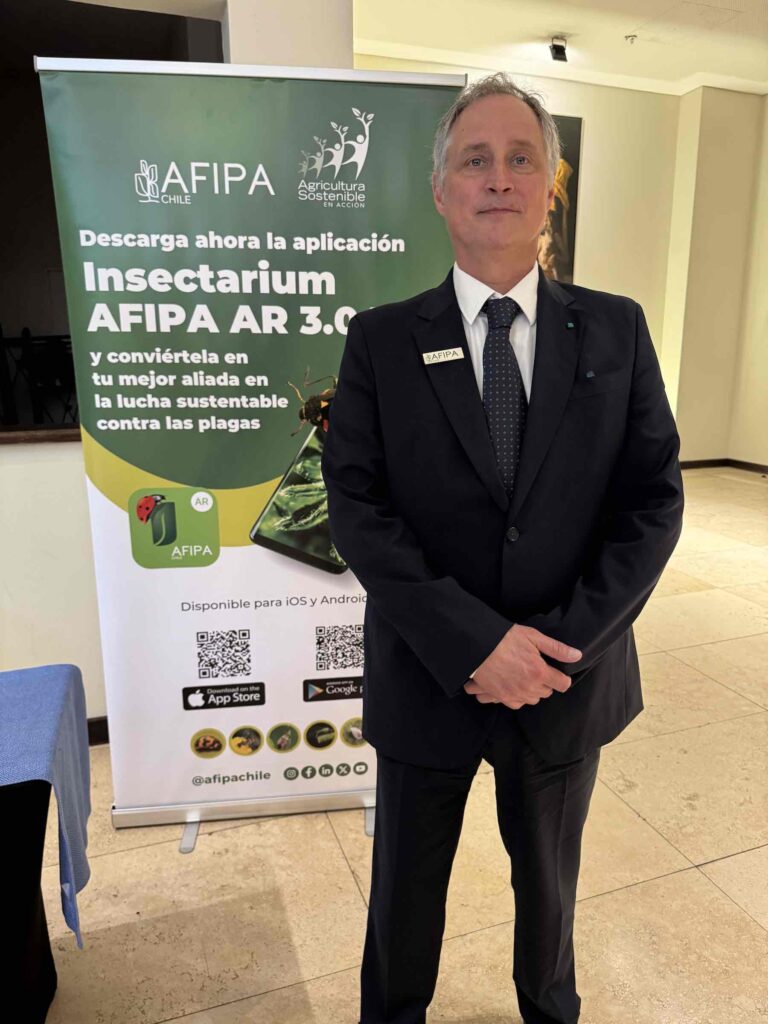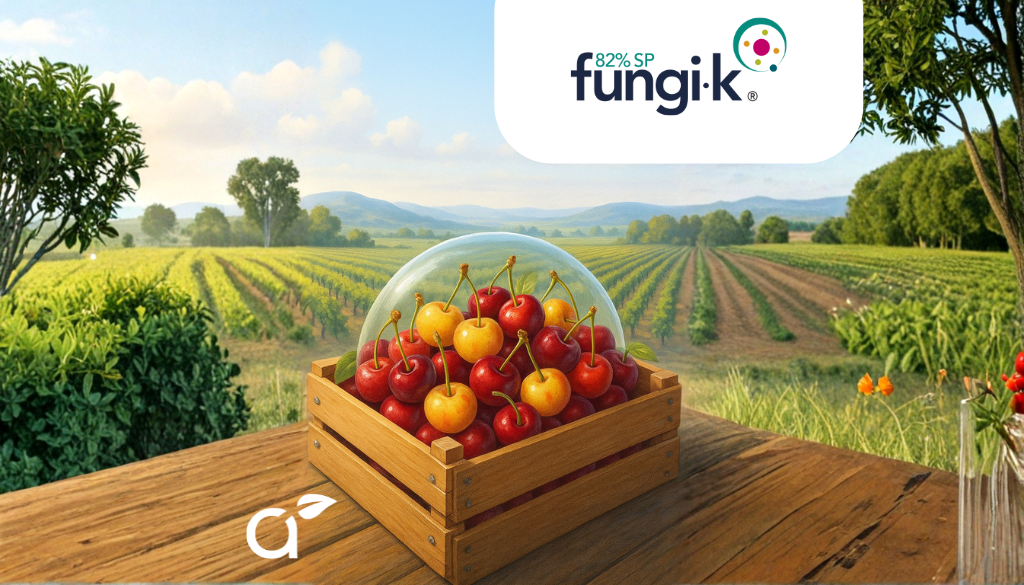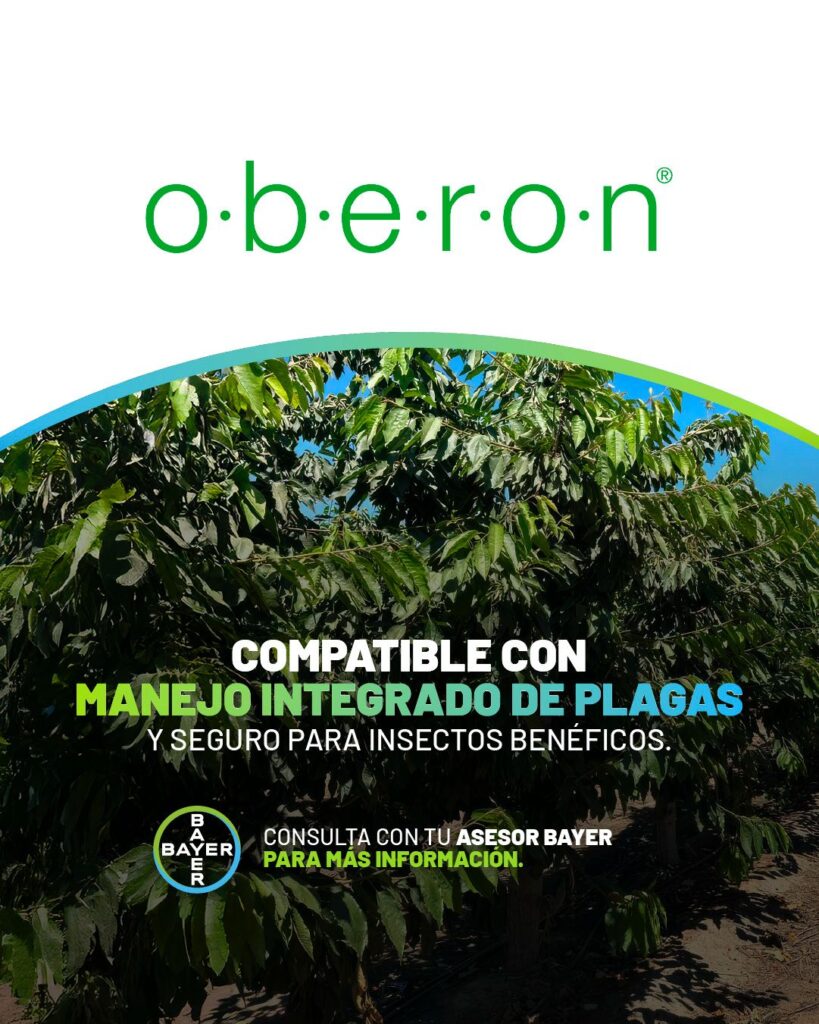By: Hector Garcia O., Co-Founder and General Manager of Diagnofruit Laboratories Ltda, Member of SOCHIFIT and AMICH. [email protected]
As the title indicates, below we will develop our pending conversation about Copper, its use in fruit growing and above all the complexities implied after its use, often irrational.
Phytotoxicity, a real fear
It is known that high concentrations of copper are toxic to plants, not only in cherry trees; however, to understand this behavior we must begin by explaining that Cu is an essential element for plants.
An adequate amount of Cu is essential for plant development, and plays an important role in a balanced nutrition; however, we must consider that each plant species reacts differently to the mineral. It is necessary for the proper activity of several enzymes in plants, it is a cofactor, as well as for chlorophyll synthesis and seed production. The presence of Cu is closely related to the production of vitamin A and is crucial for successful protein synthesis.
In response to this, and as expected, plants have evolved and generated mechanisms for the absorption and transport of this mineral within them; at the same time, and to maintain homeostasis, plant cells generated protection strategies, some of these are to complex Cu and compartmentalize in the vacuole to prevent imbalance.
As a very general background, Cu concentrations in soil depend on local geology and vary between 2 and 50 mg Cu kg − 1, but natural concentrations of Cu (> 100 mg Cu kg) can also be found − 1) in some soils. Whereas, Cu concentrations in plant shoots typically range from 4 to 15 mg Cu kg − 1 of dry matter.
Different plant species vary in their capacity to accumulate Cu, depending on the phenological stage and the application of fertilizers, a management that absolutely changes the nutritional dynamics of the system. One of the most important effects of Cu toxicity is described as detrimental to the growth and morphology of the roots, because Cu tends to be strongly absorbed by them and is not easily transferred to the aerial parts of the plant, this being the main reason for “chronic” poisoning; in other words, each application adds to the accumulation process in the soil and then in the plant, decreasing its root capacity without much noise.
Copper has redox activity, a characteristic common to other metals that is key to understanding the negative effects on plants and eventually on production. Due to this characteristic, it is toxic if concentrations increase (cellular protection systems have a limit) as a result of the uncontrolled generation of reactive oxygen species (ROS), resulting in cell damage, stressing the system, and decreasing productivity in extreme cases.
To finish and land this first point, there are two ways we could see processes of poisoning with Copper in our cherry trees, the first type is of a sharp, which occurs due to a specific application, at a time of susceptible phenology, where we can quickly observe symptoms in green tissues, shoot necrosis, necrotic spots on leaves, eventual curling and situations of fruit or floral abortion have been described, in particular the cherry as susceptible to copper poisoning in vegetative, post-dormancy growth stages.
The second process could be defined as chronic poisoning, and it is not easy to observe, since it has to do with the accumulation of copper in the system, essentially in the soil, from contaminated irrigation water or from successive applications; what has been described would result in problems with root development, plants with less vigor and decreasing productivity over time; although what has been indicated is well described for different plant species, in the case of cherry trees they are research objectives in current development.
In both cases, the saying fits perfectly: the cure was worse than the disease. One aspect that should not be left unmentioned is that copper is a microorganism controller, therefore, in the soil it would produce an impact on the microbiota, generating imbalances, selecting certain better adapted species, which significantly influences the quality of the soil and its biodiversity (living soil).
Generation of Resistance
Just as plants need copper to function and have regulatory strategies to prevent it from causing cellular damage, bacteria can adapt and start an infection in a cherry tree applied with products based on this element.
Reports in the late 80's In Michigan, USA, the detection of resistant populations of Pseudomonas syringae pv. syringae, in cherry orchards that used copper in their annual management programs; in addition, they were able to determine the genetic load that allowed this degree of tolerance, given by at least a pair of plasmids, which are also transferred very efficiently between individuals.
Almost 15 years later, already entered the '00s, a frost cycle generated a severe epidemic of bacterial cancer, and different populations within the State of Michigan were analyzed and the result indicated that the average frequency of the resistant population was 24%, but with peaks close to 50% in certain areas.
In Chile, the situation is not very different, it has been described in studies in the O'Higgins Region, in which the 80% of populations of Pseudomonidae rescued from cherry trees had some degree of resistance; in our studies, not yet published, the situation is not very different.
In this way, successive applications of copper can end up generating selection in the populations of Pseudomonas in cherry orchards, which, although it does not mean that they are not controlled, reduces the efficiency and effectiveness of control.
Restricted Use of Copper and Regulation No 473/2002 of the European Union
In a globalized world, the standards imposed in one market end up impacting the rest of the world, due to commercial interaction, and very quickly in countries like Chile, due to its open economic policy.
In 2002 the European Union developed the Regulation No. 473 which, among other provisions, generates guidelines for the use of copper in organic production plantations. It points out that the use of copper is necessary because many diseases still have no other way of being controlled, but at the same time, due to the accumulation of this metal in the soil and the implicit environmental damage, it points out that: “It is appropriate to restrict the conditions of use by setting a maximum limit of use, expressed in kilograms of copper per hectare per year. This limit should initially be set at 8 kg of copper per hectare and, after a transitional period of four years, be reduced to 6 kg per hectare, unless it is proven that this lower limit is ineffective for certain crops.”. In this way, the search for strategies to reduce the use of copper begins, even beyond organic production, in pursuit of agriculture with less impact on the environment and sustainable, opening the doors to the implementation of management ideas such as “living soil”.
Final considerations and projections.
We review the virtues of Copper as a controller of bacteria and other microorganisms in the Part I From this series of articles, today we are going to review the most problematic side related to the impact on the garden ecosystem and in general, in addition to the fact that indiscriminate use also ends up generating resistant populations that do not allow for good control. Today there are regulations that try to regulate its use, establishing the pros and cons of its use from the ground up, an exercise that must always be carried out for any pesticide, considering a technical basis given by multidisciplinary studies.
Heavy metals are natural components of the terrestrial ecosystem; however, their presence in excess is harmful to humans and the environment. The toxicity of heavy metals, like many negative situations that occur in our gardens, can be reversed and in the case of excess copper in soil there are examples based on the bioremediation, in this way it can be minimized by reducing its availability.
In a soil contaminated with copper, a reduction of the 96% on Cu availability after the addition of 10% of rice straw biochar, which should make us think about strategies along these lines, which add to the already mentioned decrease in applications and others such as the use of chelating compounds, soil inoculation with microorganisms, which in their interaction with plants end up immobilizing heavy metals, the so-called phytoremediation, all strategies that make us look at the use of copper in a positive way, but always considering a rational management strategy.








